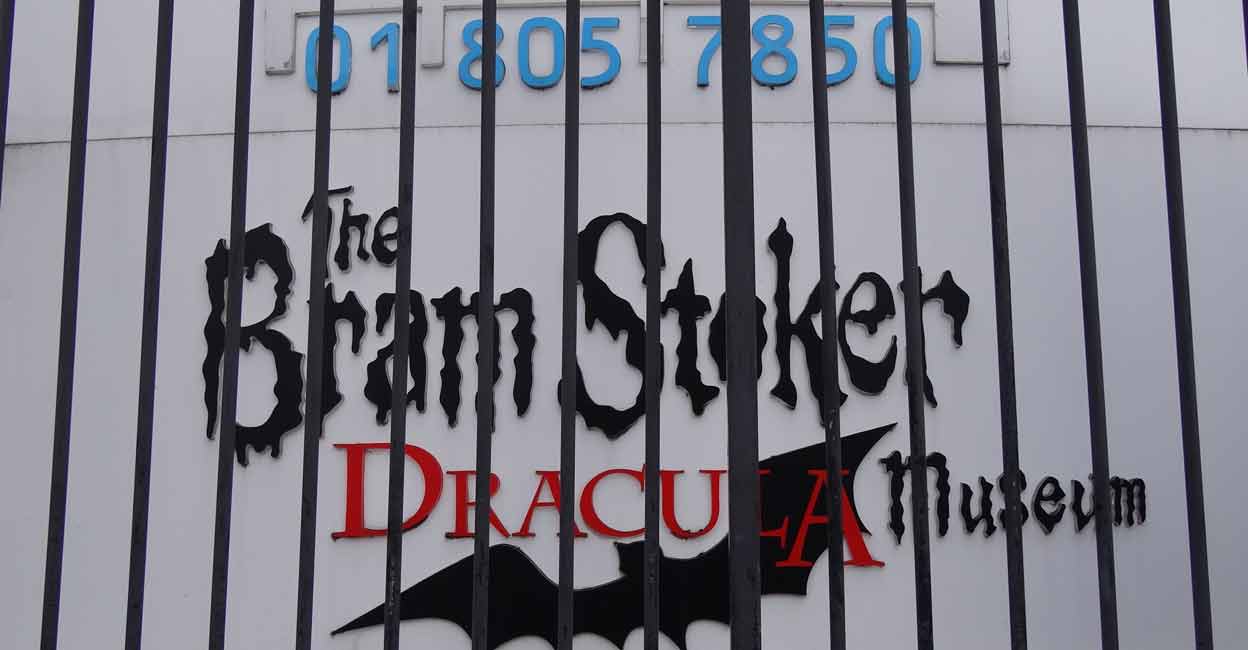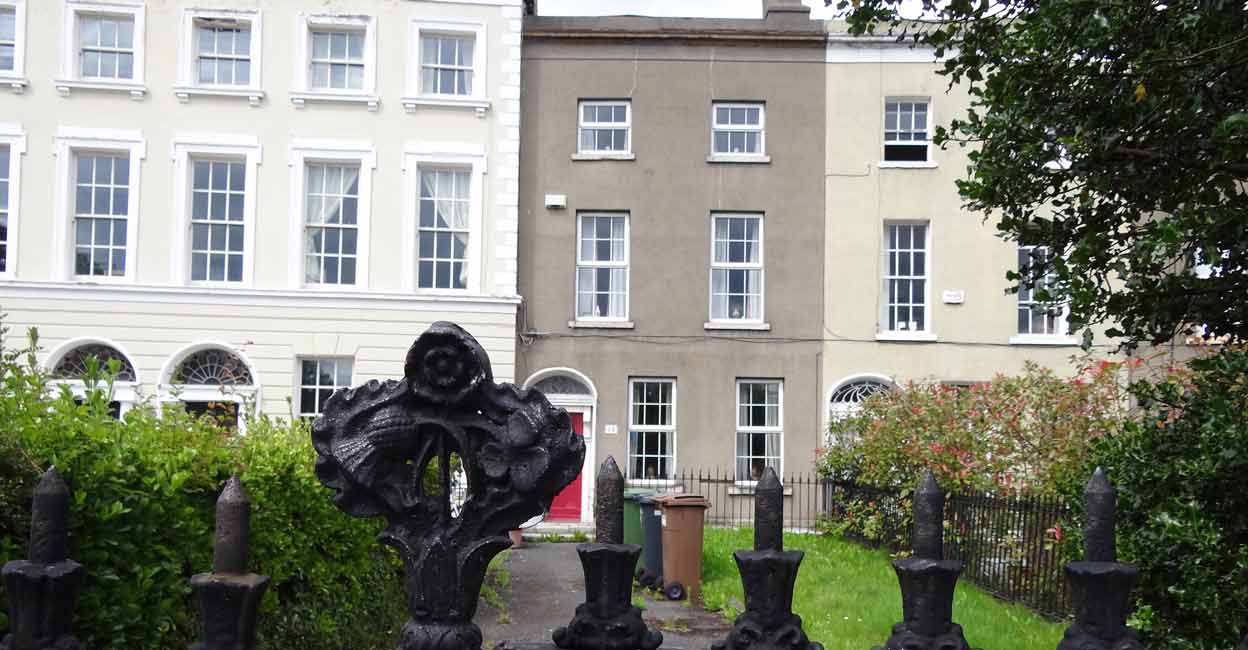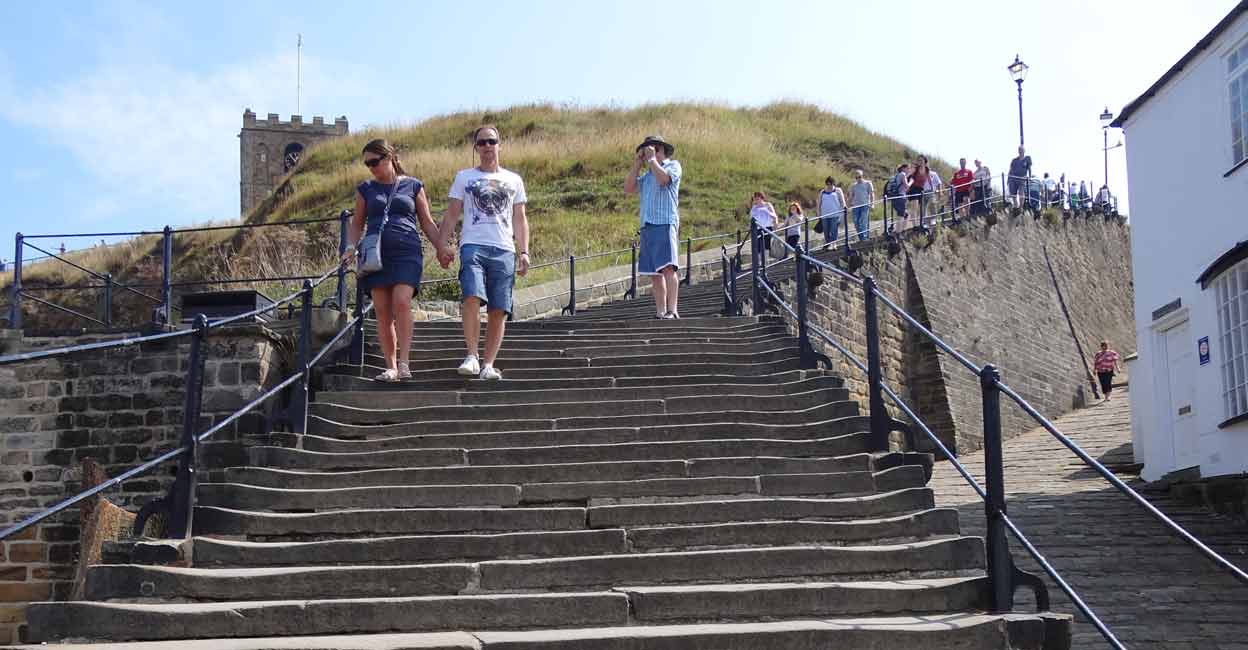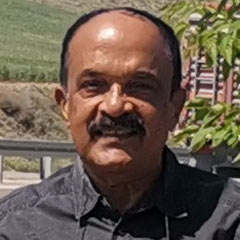Dracula moments

Mail This Article
Real Dracula land is the Carpathian Mountains, Transylvania, Romania – or that’s where Bram Stoker, the celebrated author of the classic horror novel ‘Dracula’ placed Dracula’s origins. I’m a total fan of Dracula, willing to be terrified by him any number of times in any shape. The Carpathian Mountains are in the top rung of my travel bucket list. ‘Dracula’ has held me in its magical grip ever since I was a boy-reader. I think I’ve seen six or seven of the 80-odd Dracula movies. And I own three different editions of the novel, the last bought at a Dracula spot which I shall presently mention. For me as a writer, ‘Dracula’ is a masterly novel of meticulous craftsmanship that weaves together different narrative techniques to create a brilliant, profound and riveting story. It has given sleepless nights to millions of people all over the world in its 127 years of unceasing publication.
I may not have yet made it to the Carpathians, but I did make it to two places closely connected to the Lord of Horror. Looking at my notebooks, I find that it was a long-winding journey through America, Germany, Switzerland, Austria and the Czech Republic that finally took me to Ireland and England where I ran into the Dracula trail. I hadn’t then known Bram Stoker was an Irishman. I had assumed that he was, as the author of a famed novel whose primary backdrop is England, an Englishman. In my mind, it was W B Yeats, James Joyce, George Bernard Shaw, Sean O’Casey, Liam O’Flaherty and Frank O’Connor who were the eternal Irishmen. So, sitting in my friend Santhosh Joseph’s home in Dublin and turning the pages of my copy of ‘Lonely Planet: Ireland’ I was shocked at my ignorance. Jonathan Swift, Oliver Goldsmith, Oscar Wilde, and JM Synge, all were Irish. And I’d forgotten about Samuel Becket and Elizabeth Bowen, among others.
And Bram Stoker. That took my breath away! I was sitting in the hometown of the master storyteller who had given me the first taste of the eerie magic of horror. It was the Malayalam translation of ‘Dracula’ that I had read back in the fifties. The terror it created in the boy I was, was in one sense exhilarating but also very real. Every day I closed the window of the room I slept in because I truly feared Dracula would fly in through it, bite me and turn me into a vampire. And I did it before sunset because I was afraid to put my hand out after dark. Dracula might grab it and give me his terrible bite.
One sunny, warm morning Santhosh and I set out through the quiet streets of Dublin for 30, Kildare Street, Dublin 2. The original home Bram Stoker was born in was in another part of the city. This was where he had lived a considerable part of his life till he moved to England. We had a difficult time finding the house because 30, Kildare Street, was apparently only the number of the plot and there were several houses on it sitting next to each other. And, as we found out later, the memorial plaque fixed to Stoker’s house had been removed for renovation work. A helpful passer-by pointed out the right house to us. Its number was 15. It was just another faceless 18th/19th century red-brick townhouse, merging into the houses on both sides. There was a green lawn, with garden plants growing along its borders, all in a state of neglect.
The small iron gate was open and we walked in to take a closer look. The house appeared locked. I peeped in through the window whose curtain was drawn, confident that the house was unoccupied. I made out nothing. Looking back, I wonder if my confidence was justified. Because later I learnt that visitors were not allowed into the house. I think the reason was that the present owners were living there and their privacy mattered. It was not a public memorial. Only, the memorial plaque on the outer wall announced the Bram Stoker connection, as is common in Europe in regard to famous personalities.
The locked house was not an anti-climax for me. Nor was I disappointed. I was thrown into a charmed and haunted world far away and long ago. I stood there imagining the man who walked in and out of that door for many years and gave the world a magnificent story of blood-curdling horror. Far, far away in a Kerala village he had made me close my window with trembling hands. I thanked him as a reader and as a writer.
Santhosh had hung his camera bag with the camera in it – an expensive one – on the gate. I think he just wanted to offload it briefly. It was when we had driven some distance from Stoker’s house that Santhosh realized that the camera wasn’t in the car. We drove straight back and found the bag exactly where he had hung it – and the camera inside. I said it was a miracle bestowed by Bram Stoker and/or Dracula on two Indians who had taken the trouble to make a visit to Stoker’s home in their memory. Santhosh said that on the other hand, chances were that the bag would’ve hung there till a municipal cleaner found it. That was the real anti-climax for me. My miracle theory was defused. But, wait, a miracle was round the corner.

Nearby we found a Bram’s Café which was just another cafe and a Dracula Museum which was closed. That was all there was to the memory of a writer whose work had enthralled readers all over the world for over a century. Later I happened to read a tourism promotion brochure of the government of Ireland and was surprised to find that Bram Stoker’s name was not included in its list of Famous Irish Writers. Perhaps the Irish do not relish horror. Or they think he’s too popular to be acknowledged as famous! Nevertheless, my hunch is that Bram Stoker is easily the most widely-read Irish writer of fiction, beating, in all probability, even James Joyce.

From Ireland, I went on to Scotland and onwards to Hull in England. Now I was very much on the Dracula scent. I had identified the next Dracula connection. Thus, I found myself driving north from Hull with my host Bobby George to the seaside town of Whitby in North Yorkshire. It was a detour because our destination was Manchester in the west where Bobby lived. Bobby had – what to me was – an exceptional occupation. He drove the Royal Mail truck with a full load from Manchester to Edinburgh overnight – a distance of 350 kilometres - I think three times a week. I really wished I could be his fellow traveller for a night. It would’ve been a marvellous journey through English and Scottish nights taking in the nocturnal life on the highway. But it remains yet another bucket list item! And Bobby has migrated to Australia!
Whitby, readers of ‘Dracula’ might recall, is where Dracula made a tumultuous entry into England on a dark, stormy night. It is a spectacular, fairy tale harbour town on the North Sea coast, known for the ruins of the 13th century Abbey, the ancient cemetery which is still in use, and the 199 steps – originally built in wood in 1370 – that climbs the cliff from the harbour to the Abbey. It is celebrated today as England’s most famous Dracula spot, drawing thousands of visitors every day.

It was here, as described in chapter 7 of ‘Dracula’, that on August 7 sometime in the 1890s, on the night of a wild storm, the Russian schooner ‘Demeter’ from Varna in Bulgaria was washed up on Whitby’s sands, all crew dead. And then, the novel says, “an immense dog sprang up from below, as if shot up by the concussion, and jumped from the bow on the sand. Making straight for the steep cliff…it disappeared in the darkness…” Bram Stoker leaves to our imagination how the dog, who was none other than Dracula himself, reached the top of the cliff. As I went down the 199 steps, filled with tourists taking photos and selfies, I had goosebumps imagining how the Dark Lord could have bounded up these steps to wreak vampire havoc in England.
Bram Stoker’s novel immortalized the little town of Whitby. And it continues to bring in huge revenues to the town from the massive tourist trade. Bram Stoker had gone to Whitby at the end of July 1890 for rest and recuperation and to work on a novel about vampires. On August 8 he walked down to the Whitby public library and discovered there a book that carried a description of the history of the Transylvania-born nobleman Voivode Vlad III Dracula, also known as Vlad the Impaler, a name given to him because of his cruelty. The meaning of Dracula is son of the Dragon, though Stoker mistook it to mean the Devil. Stoker had unexpectedly discovered the thread of a great vampire story and the perfect name for his blood-thirsty hero. He reworked the novel he had started on, borrowing elements from Transylvanian folklore and history. Thus was born ‘Dracula’, a novel that spelt horripilation for millions of readers over generations.
.jpg)
And there was a miracle waiting for me at Whitby. I walked over to the bookshop and bought a copy of ‘Dracula’ as a keepsake. To refresh my memory, I turned the pages to read the description of Dracula’s lethal arrival in Whitby. I couldn’t believe my eyes. I looked again to make sure what I read was real. It was. In the novel, Stoker had constructed the shipwreck and the appearance of the mysterious dog, using a fictitious news report dated August 8 about the previous day’s strange events.
And there I was standing in Whitby on an August 8! For me, it was nothing but a perfect miracle, an amazing coincidence. It was later, as I read source material on ‘Dracula’, that I understood the additional significance of the date August 8. Stoker had unobtrusively perpetuated in the novel the date – August 8 - on which he had found the history of Dracula in the Whitby public library. And I had been lucky to reach there all the way from India, halfway around the world, against all odds, on August 8 to experience the mystery of that special day.
PREVIOUS: REMEMBERING STALIN IN GORI
Paul Zacharia is a well-known Indian writer and columnist.




